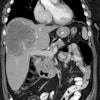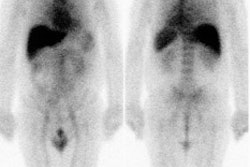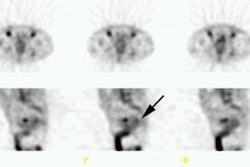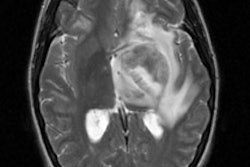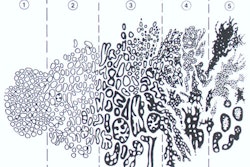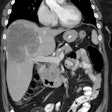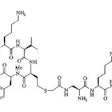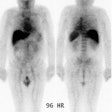Introduction
All cancers have "staging systems" that physicians use to describe the extent of the cancer or the degree to which it has progressed. These staging systems have changed over the years as we have learned more about cancer. The system used to stage prostate cancer has changed relatively recently, and so your physician may use the old ABCD (Jewett-Whitmore) system to describe the stage of the disease or the currently recommended TNM system. Because this can get very confusing, we have given information from both these systems below.The T stage of the disease refers to the form of the primary tumor within the prostate. The N stage refers to the status of the lymph nodes near to the prostate (the pelvic lymph nodes). Finally, the M stage refers to the degree of metastasis -- the degree to which prostate cancer has traveled out of the immediate area of the prostate to other organs of the body.
Stage T1 disease
Stage T1a diseaseStage T1a disease is always found incidentally, usually in older men who have received a surgical procedure called a transurethral resection of the prostate (TURP) to help them urinate with greater ease because their prostate is enlarged. To qualify as stage T1a, not more than 5% of the tissue removed during the transurethral resection can show signs of prostate cancer, and all the cancer cells must be "well differentiated" which means that the cells have a comparatively regular form and order. Stage T1a disease is best compared to stage A1 disease in the older Jewett-Whitmore staging system.
Stage T1b disease
Stage T1b disease is very similar to stage T1a disease. It too is always found incidentally as a result of a transurethral resection of the prostate. However, we call it stage T1b as opposed to stage T1a if more than 5% of the tissue removed is prostate cancer tissue or if that tissue is "moderately or poorly differentiated" or both. We say that cancer tissue is moderately or poorly differentiated if the cancer cells have started to become disordered and to lose their structure. Stage T1b is similar to the stage called A2 in the older Jewett-Whitmore system.
Stage T1c disease
We call a prostate cancer stage T1c when it is found as a consequence only of the patient having a positive result to a prostate specific antigen (PSA) test but no other clinical sign of the disease. This stage compares precisely to the so-called stage B0 disease in the Jewett-Whitmore staging system. Because of the rapid increase in the number of patients having PSA tests in the past few years, stage T1c has become a relatively common stage of prostate cancer to be diagnosed.
Stage T2 disease
Stage T2a diseaseWhen a physician says a patient has stage T2a disease, it means the physician can feel the tumor in not more than half of one side (one lobe) of the prostate when he does a physical examination with his finger (a digital rectal examination or DRE). The physician calls this a "palpable" tumor. Stage T2a disease is very similar to stage B1 disease in the Jewett-Whitmore system of staging.
Stage T2b disease
Like stage T2a disease, stage T2b disease is also something the physician can feel when he does a digital rectal examination. In this case, however, more than half of one lobe (but not both lobes) of the prostate must have palpable tumor which the doctor can feel. Again, stage T2b disease is very like stage B2 disease in the older Jewett-Whitmore system.
Stage T2c disease
Stage T2c disease is similar to the other two stage T2 disease described above, except that in this stage the doctor is able to feel palpable tumor in both sides or lobes of the prostate, the left side and the right side.
Stage T3 disease
Stage T3a diseaseAll forms of stage T3 disease require extension of prostate cancer tissue
through the so-called "prostatic capsule" and out ofthe
prostate into the immediately surrounding tissue. In the case of stage
T3a disease the prostate cancer tissue must have extended outside the prostate
capsule on one or other side of the prostate only (unilateral extracapsular
extension). Thus stage T3a is very similar to some forms of stage C1 in
the Jewett-Whitmore system.
Stage T3b disease
Stage T3b disease is comparable to stage T3a disease, except that extension of the prostate cancer tissue outside the prostate must occur on both sides of the prostate (bilateral extracapsular extension). This stage is comparable to other forms of stage C1 disease.
Stage T3c disease
Stage T3c disease basically is used to describe prostate cancer which has extended into one or both of the seminal vesicles (which is roughly comparable to the older stage C2 disease). However, stage T3c is also used to define disease which combines extracapsular extension with either unilateral or bilateral seminal vesicle involvement (which is comparable to stage C3 in the Jewett-Whitmore system).
Stage T4 disease
Stage T4a and stage T4b are stages of prostate cancer which had no true equivalents in the Jewett-Whitmore system. Tumor is still localized to the pelvic region, but has definitely escaped from the prostate and seminal vesicles.Stage T4a disease
In stage T4a disease the tumor has escaped from the prostate and may invade any or all of the following: the bladder neck, the external sphincter (which helps to control urination), and the rectum.
Stage T4b disease
In stage T4b disease the tumor has escaped from the prostate and may invade the levator muscles and/or may be fixed to the pelvic wall.
Stage N+ disease
If a case of prostate cancer is described as N+ this means that microscopic amounts of prostate cancer can be recognized in the pelvic lymph nodes or that the disease has extended into the rectal area. This stage is similar to stage D1 in the Jewett-Whitmore staging system.Sometimes physicians will use the following subclassifications of stage N+:
Stage Nx: The presence or absence of cancer in the pelvic lymph nodes cannot be assessed.
Stage N0: There is no sign of cancer in the pelvic lymph nodes.
Stage N1: There is metastatis in a single lymph node (not more that 2 cm in greatest dimension).
Stage N2: Either there is metastasis in a single
lymph node (2 - 5 cm in greatest dimension) or there are multiple lymph
node metastases (none more that 5 cm in greatest
dimension)
Stage N3: There is any metastasis in the lymph nodes more that 5 cm in greatest dimension.
Stage M+ disease
If prostate cancer is clearly evident outside the pelvic area (most commonly as distant foci of cancer known as metastases), the disease is classified as M+, which is almost exactly comparable to stage D2 of the Jewett-Whitmore system. As with the classification of nodal status described above, we often find the following terminology applied:Stage Mx: The presence or absence of distant metastasis cannot be assessed.
Stage M0: There is no sign of distant metastasis.
Stage M1a: There is distant metastasis in the non-regional lymph nodes.
Stage M1b: There is distant metastasis in the bone.
Stage M1c: There is distant metastasis at other sites.
